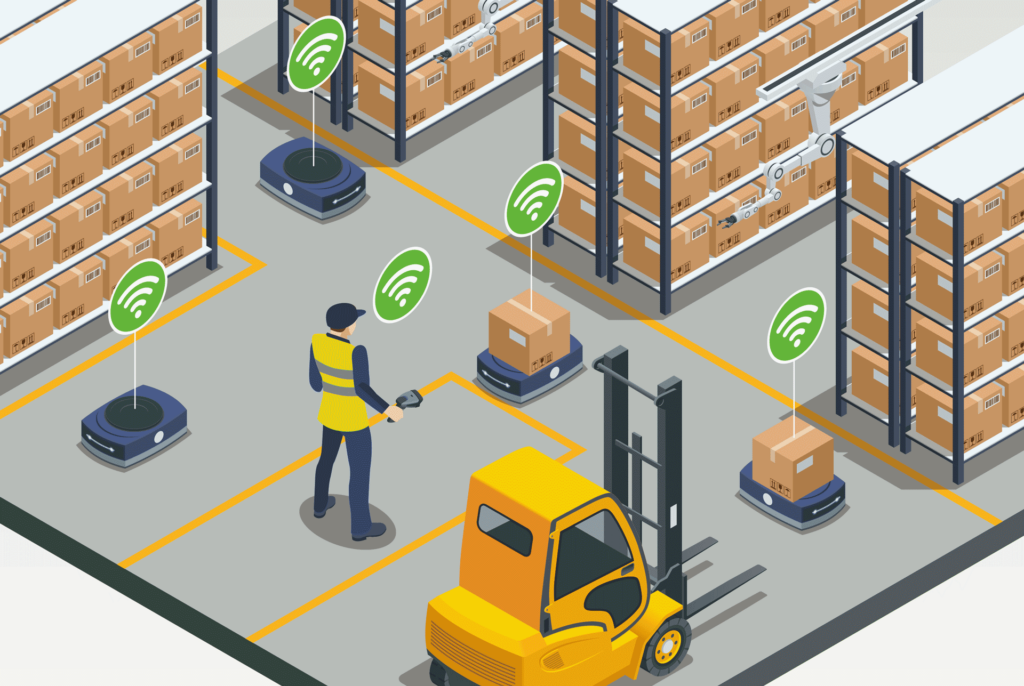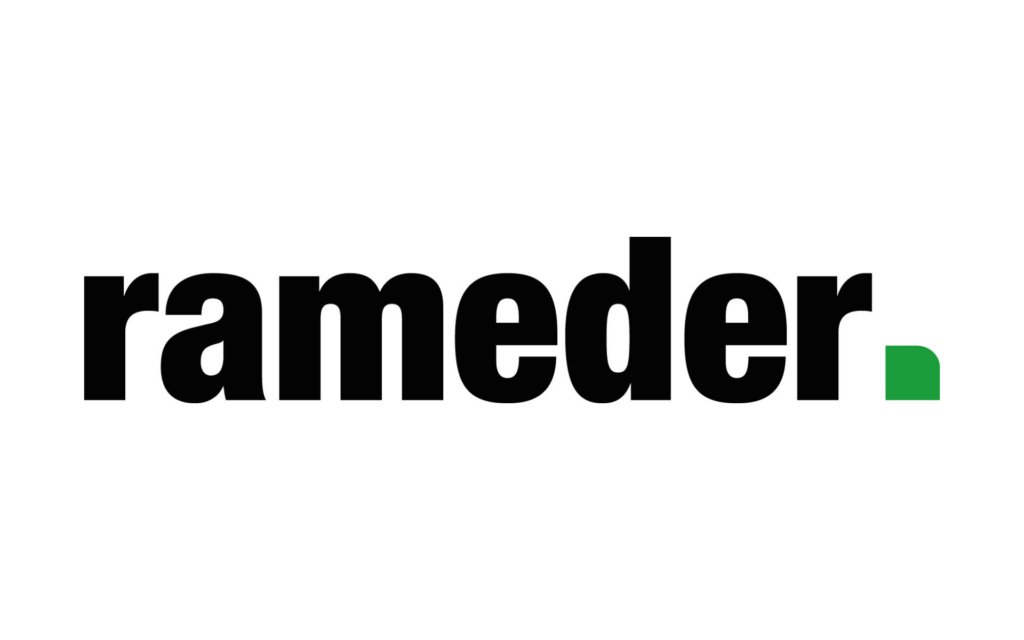Automation, digitalization and intelligence are developing logistics strongly right now. For the end customer it means better and faster service, for the customer company it brings information to support management and production, and for the logistics company it gives quality, precision and efficiency to the operation and transparency to the partnership, HUB Logistics CEO Joni Sundelin and development director Anssi Tura list.
Smart logistics means that people are supported in decision-making and guided in their work with the help of systems and digital tools. It can be robots, cobots that help people, guiding information on the screen or, for example, a text message with a code for searching for a package. In warehousing, it means, for example, systems that direct the employee to the right shelf location or to receive goods.
– For us at HUB, smart logistics is practically the fact that we are able to offer the highest level of service on the market in terms of quality and capacity. It appears to the end customer as the fastest and most error-free service. All of that is largely thanks to digitization and automation, HUB CEO Joni Sundelin says.
Intelligent logistics includes many different areas and factors. According to Anssi Tura, knowledge is its most important element, because smart logistics is actually the active utilization of knowledge. The systems give the company’s management visibility into how logistics works. Among concrete factors, Tura gives examples of automation, AGV and robotics.
For us at HUB, smart logistics is practically the fact that we are able to offer the highest level of service on the market in terms of quality and capacity.
Joni Sundelin, CEO
– In supply chains, we also get access to integrations, i.e. how information moves and what information moves. Logistics is characterized by a chain-like nature, i.e. information flows and the links in the chain enrich information. The previous link in the chain always passes information on, explains Tura.
Joni Sundelin reminds that when it comes to communicating information, one is often surprised by how much there is still to do in the journalist-interface, whether it is about the movement of information or its correctness.
– Globalization has brought its own challenges: there are long chains, ship journeys and chartering. Optimally, each part of the chain brings more information, but abundance is perhaps the biggest challenge. Each service provider easily makes their own applications, and the data is too often unenriched, so there is a lot of work to be done to make the entire chain into intelligent logistics.
Automation is the trend in logistics right now
Logistics has digitized rapidly, and according to Anssi Tura, the industry is even one of the drivers of digitalization. There are many uses for it and new ideas for processes are constantly being found.
– Thanks to digitization, information can be easily collected and information from the process can be effectively absorbed into decision-making at different levels. The biggest strength of digitization for this industry is that information can be stored incredibly well. You just have to know how to use it well, Tura reminds.
– One trend in the Finnish market, for example, is increasing automation to make the process more efficient. In recent years, robotics and cobot solutions, where robots support what people do, have also increased their role.
Joni Sundelin says that digitization has pushed development forward in the last mile delivery side, i.e. in the last stage close to the end customer, for example parcel machines.
– A lot of things that can’t be seen have come to that end, for example transport optimization and control. Various autonomy functions are also constantly appearing more and more.
The biggest strength of digitization for this industry is that information can be stored incredibly well. You just have to know how to use it well.
Anssi Tura, Development Director
Intelligence can be seen in everyday logistics
– Our employees can see from the display boards what everyone has to do next. They also have a device with them that guides the employee to work flawlessly and efficiently, Anssi Tura describes.
– We can also set goals more clearly and see if we have succeeded in them. It provides measurability and, for example, opportunities to reward success. Employees see what is expected of them and also see for themselves how they have performed. Goals and visibility into your own performance bring an estimated 20 percent more efficiency, and that’s quite a lot.
Humans make mistakes, but automation supports making fewer of them. Anssi Tura tells an example from HUB’s Hakkila warehouse:
– The light of the collection point in the automated warehouse guides the employee to take the right product from the right box. When he puts his hand in the box, the sensor makes sure the hand is in the right box. When the product is placed in the correct box and it goes into traffic, the box is weighed and the correct weight of the product is detected. Only after this confirmation will the product go ahead. Ten years ago, these would not have been believed to be true.
Information guides decision-making at HUB logistics. Joni Sundelin says that thanks to the transparency of the data, it is constantly known what kind of resource needs there are now, and in the future, as well as what kind of order backlogs and accumulations are going on.
– On the other hand, on the incoming side, you can get information about, for example, how many pallets are coming in today and how many tomorrow. Then we will be able to optimize our own operations in cooperation with customers and suppliers, says Sundelin.
Anssi Tura has noticed that the game of logistics is constantly getting tougher with the expectations of end customers.
– When we, as consumers, place an order for a device in an online store, we feel that it is an added value that within a few hours we receive a message on the phone about the understanding of the order and the movement of the shipment. In logistics, it is even more important that the goods must be sent quickly.
Smart logistics is HUB’s strength
Automation, digitization and intelligence are an essential part of HUB logistics’ operating method. For the logistics company, these factors mean service quality, accuracy and efficiency in operations, and transparency in partnership. According to Joni Sundelin, HUB’s expertise and position in the digitalization of logistics is solid.
– Our strong and extensive expertise in intelligent logistics plays an important role when we serve our customers. When talking about any technology, it must of course be functional. But when we know how to use it to guide, implement and lead and we understand in which direction the process needs to be taken, we are ahead of others.
– In addition, our operating model is flexible, agile and very customer-oriented, and we know how to solve problems. For example, in internal logistics, we are a leading player in the engineering industry in Finland.
Anssi Tura adds warehouse automation and a role as a 3PL operator.
– We have done a lot of work with customers who have a common desire for digitalization and its development. We have extensive experience and know-how in them, while others are just setting up warehouses that utilize automation and robotics.



